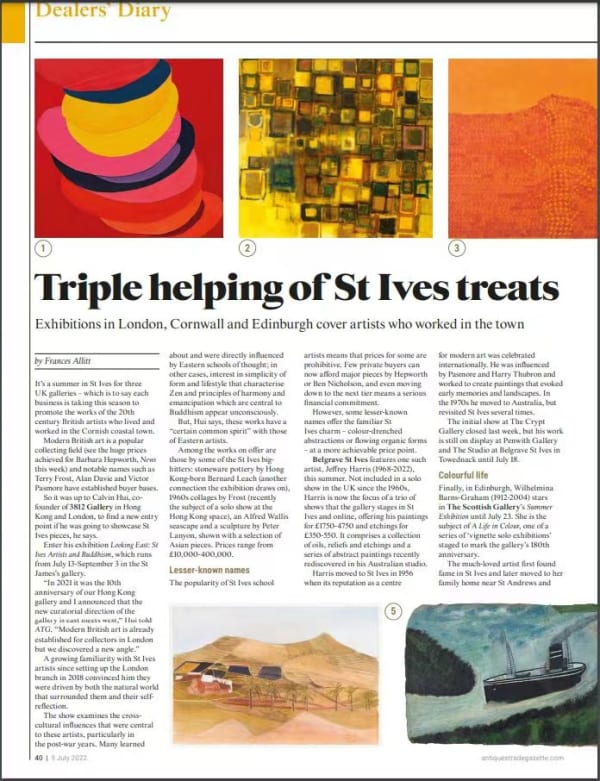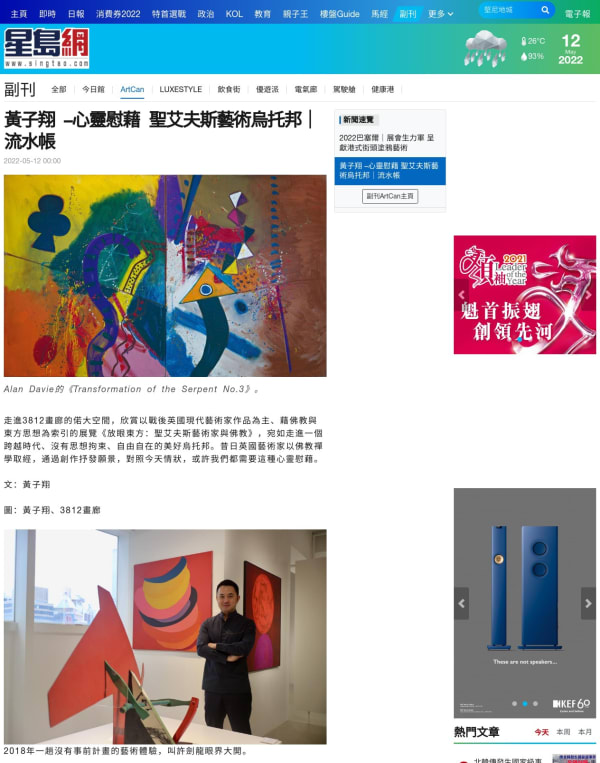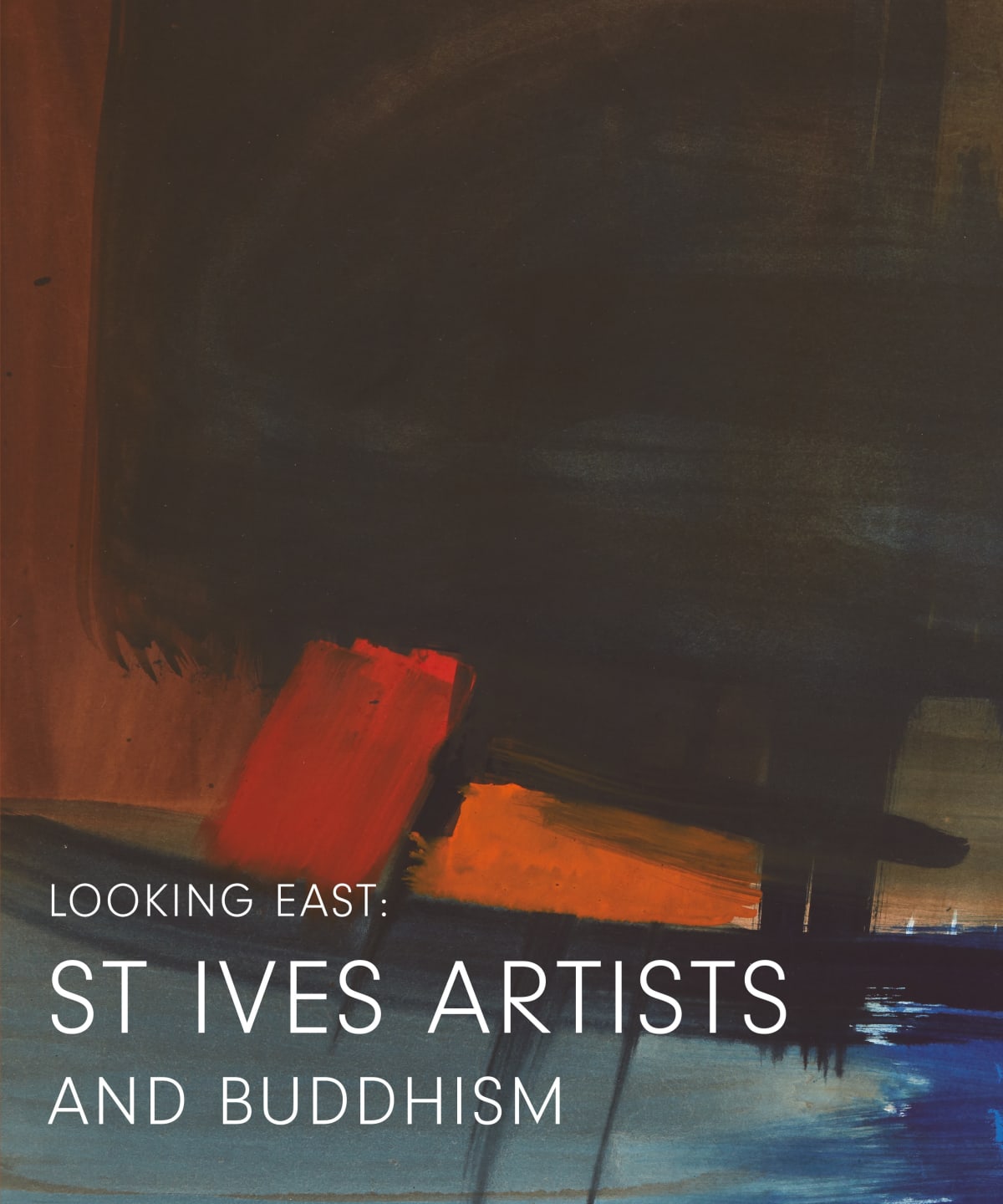Bryan Wynter 布萊恩.溫特
An inveterate explorer, Bryan Wynter was at his happiest canoeing on the rivers and around the coastlines of Cornwall, or swimming in the Atlantic. Perhaps more than any of the St Ives school, he was compelled to paint by a deep-rooted interest in the workings of the subconscious mind – and in particular, the ways that the mind perceives and translates what Wynter himself described as the ‘elemental forces’ of the natural world.
Born in London, Wynter attended the Slade School of Art from 1938–40; during the war he was a conscientious objector, working in an animal-testing laboratory in Oxford, which left him with feelings of depression and alienation. His move to Cornwall in 1945 was partly inspired by his reading Aldous Huxley’s Ends and Means (1937), which argued for a kind of political reform that drew its impetus from personal spiritual development.
After 1945, Wynter led a simple existence at Carn Cottage, on the moors above Zennor near St Ives – though he maintained close contact both with the local network of artists and with the London art world. In 1946 he co-founded, with Peter Lanyon and others, the Crypt Group, and in the 1950s exhibited both with the prestigious London Group and the influential Penwith Society.
Wynter’s early paintings, completed in the first years after he moved to St Ives, were small in scale and romantic in mood; like Ben Nicholson after he discovered the work of the untrained mariner-painter Alfred Wallis, Wynter focused on rustic motifs typical to Cornwall – gulls, fishing boats, abandoned mines.
Taking up a part-time teaching post at Bath Academy of Art in 1951, Wynter was exposed to developments in European and American painting, and began to turn to the richly layered, abstract compositions for which he is best known. Like Alan Davie, Wynter was influenced by the publication, in 1953, of Eugen Herrigel’s Zen in the Art of Archery, and the ideal of ‘an “artless art” growing out of the Unconscious’ it propounded. He forged a close friendship with the eccentric, and profoundly mystical St Ives-based poet W.S. Graham, and experimented with the hallucinogenic drug mescaline. In the mid 1950s, painter and critic Patrick Heron described the experience of looking at Bryan Wynter’s works as that of ‘looking into a system of hanging, semi-transparent bead-curtains, ranged one behind the other’.
As well as the operations of the unconscious, Wynter was interested in the science of natural growth. In paintings like Mars Ascends (1956; Tate) both come to the fore – complex, interlocking patterns that Wynter allowed to come to him by chance, each brush-stroke following organically on to the canvas from the last. This was a systematic, structured approach to Surrealist automatism; at this stage in his career, Wynter described his relation to his work as that of ‘approach[ing] nature from the other side.’
The 1960s brought another shift; inspired by his canoe voyages, Wynter began work on a series of ‘water paintings’, in which blocks of vivid primary colour overlap, offset by bold, meandering black lines on white, reminiscent of lapping waves. These years also saw the development of his IMOOS (Images Moving Out Onto Space) – colourful, illusionistic mobiles, which allowed him to explore notions of organic growth, kinesis and perceptual shift in ways other to those offered by painting.
Wynter died suddenly, from a long-standing heart condition, in 1975 at the age of 60. In 2001, Tate St Ives hosted ‘Bryan Wynter: A Selected Retrospective.’ Wynter’s work is held in major public collections throughout the United Kingdom, among them the Tate, the Government Art Collection, the National Galleries of Scotland and the Arts Council.
-

Looking East: St Ives Artists and Buddhism
13 July - 10 September 2022 LondonTouring all the way from Hong Kong to London, Looking East: St Ives Artists and Buddhism explores the unique relationship between artists working from St Ives during the post-war period...Read more -

Looking East: St Ives Artists and Buddhism
21 April - 31 May 2022 Hong KongLooking East: St Ives Artists and Buddhism explores the unique relationship between artists working from St Ives during the postwar period and Eastern spirituality. Once a small fishing village in...Read more








